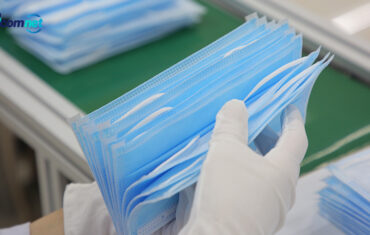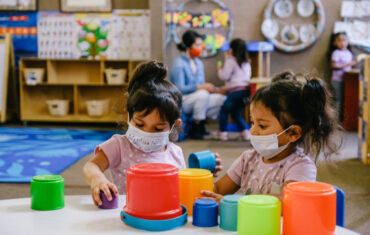When it comes to wearing face masks to help prevent the spread of COVID-19, parents must grapple with additional uncertainties about their kids. The CDC outlined safe ways that people can make their own masks at home. Additionally, many new products are available which meet these guidelines, but masks are never fail-safe. Especially when children play with straps and fabric.
Before you buy a mask online or try to make one yourself, it’s important to understand the fundamentals of face masks and their role during this critical time.
Face masks are not for all kids
Face masks can impede breathing or get tangled. According to the CDC, children under 2 years old should not wear face masks. Also, people who have difficulty breathing or those who cannot remove the mask without help. For younger children, too, you’ll want to monitor with them mask to avoid any choking hazards. If their child absolutely refuses to wear a face mask, they don’t have to force it. But that also means the child should not be in public places or at large social gatherings.
Fabric isn’t as important as density
Face masks are available in a variety of materials, including cotton, denim, and spandex. Researchers have found that when it comes to preventing COVID-19 spread, a mask’s material isn’t as important as how tightly it’s woven. The more compact the fabric threading, the more protective the mask. Cotton tends to be more tightly woven than other materials.
Comfort is key
Kids’ face masks must be comfortable. The ear attachments shouldn’t chafe, the mask shouldn’t be fastened too tight, and the material should be soft. Some masks have pleats to conform to the face or wiring that holds up the nose area, which can make the mask more breathable. Whatever your child’s preferences, comfort should be one of parents’ top priorities when buying or making a mask. Adjustable ear loops may help achieve a better fit as well.
Proper mask usage and care are important
The CDC advises people to wash their hands with soap and water, or use hand sanitizer if soap and water are unavailable, before putting on face masks. This should also be done after touching, adjusting, or removing the mask. The face mask should completely cover a child’s mouth and nose.
To put on face masks, place it over the nose and mouth first, secure it under the chin, and then secure the elastic loops behind the ears or tie the ties securely at the back of the head. A properly fitted mask should also fit snugly along the sides of the face. Parents and children should only handle the ear loops or ties to take off the mask. Once removed, the outside corners should be folded in on themselves to prevent contamination. Fabric masks should be washed daily with mild detergent and water, dried completely in a hot dryer on the highest heat setting, and then stored in a clean container or bag.
The face masks market is growing, which means there are a lot of questionable products available. Right now, the best kids’ masks will probably come from a brand you already trust. Ecomnet is one of the brands you can use.






